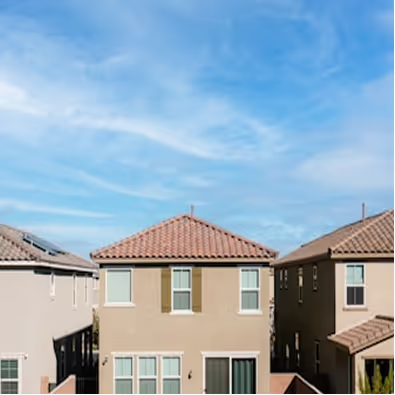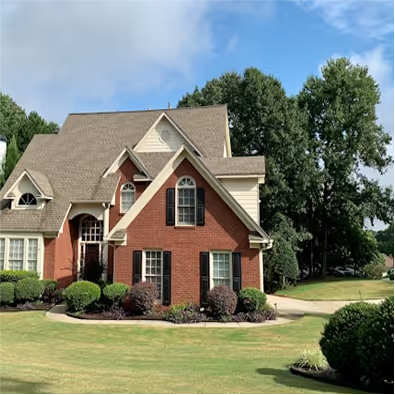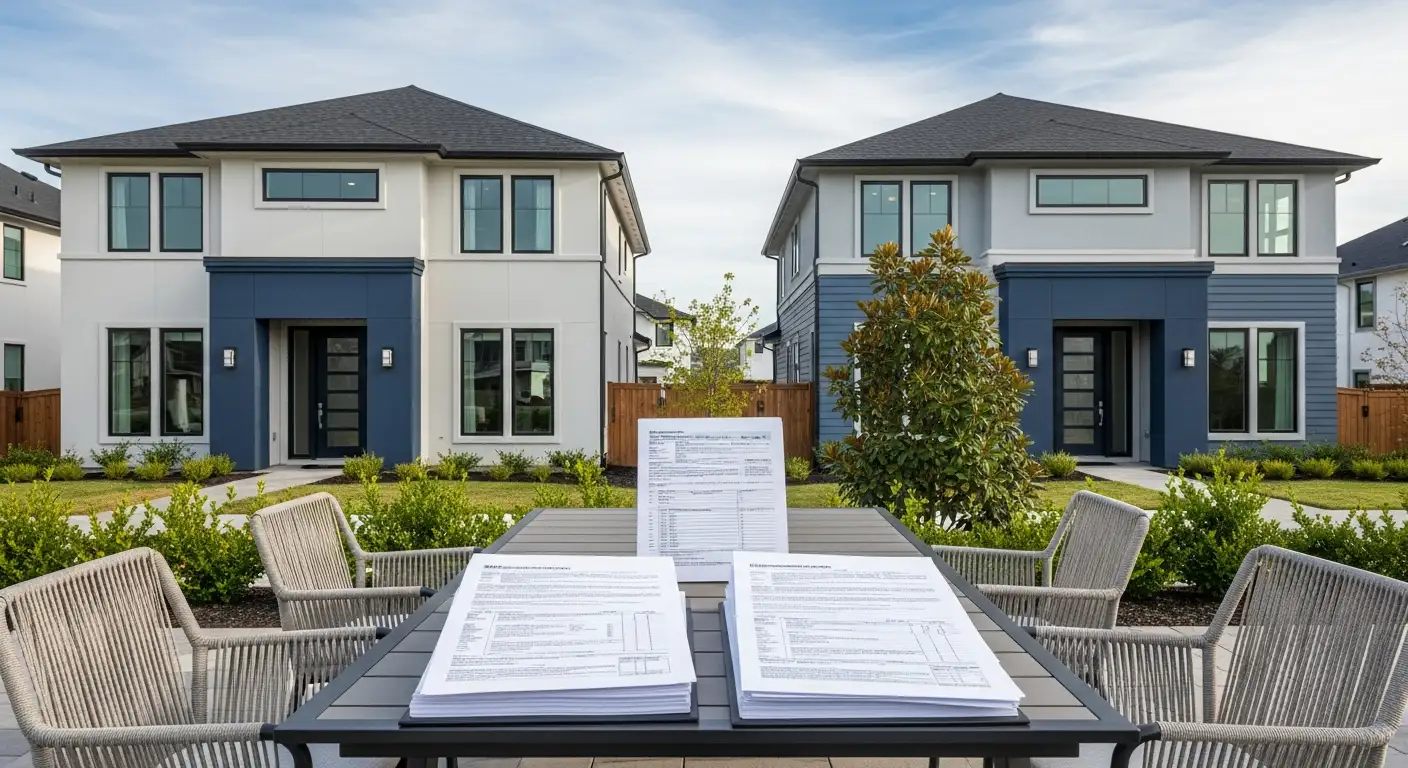Understanding Loan Types in High-Cost Real Estate Markets
In today's real estate market, especially in high-cost areas, homebuyers often encounter loan options exceeding standard conforming limits. Among these, high balance and jumbo loans stand out as crucial choices for financing properties that surpass traditional lending thresholds. Understanding when to opt for a high balance loan over a jumbo loan can significantly affect loan terms, eligibility, and overall affordability. This article explores the distinctions, requirements, and strategic considerations essential for borrowers evaluating these options in competitive housing markets.
Defining High Balance and Jumbo Loans
What Are High Balance Loans?
High balance loans, also known as conforming high-balance or super-conforming loans, are mortgage loans available in designated high-cost areas where property prices exceed the national conforming loan limits but remain within local county limits. These loans conform to the lending guidelines set by government-sponsored enterprises like Fannie Mae and Freddie Mac. Loan amounts for high balance mortgages can exceed $806,500 and go up to $1,209,750 depending on the area.
What Are Jumbo Loans?
Jumbo loans are non-conforming mortgages used to finance homes with loan amounts exceeding the limits for high balance loans. They are designed for luxury or expensive homes in high-cost or competitive markets and are not backed by Fannie Mae or Freddie Mac. Jumbo loans often require higher credit scores (generally 700+), larger down payments (10-30%), and stricter debt-to-income ratios.
Conforming vs. Non-Conforming Loans
The key difference lies in whether the loan meets FHFA’s conforming loan limits. High balance loans conform because they fall within local limits set by FHFA for high-cost areas and qualify for purchase by agencies like Fannie Mae. Jumbo loans are non-conforming because their amounts exceed these limits and lack such backing, leading to stricter qualification criteria and often higher interest rates.
Role of FHFA Loan Limits
The Federal Housing Finance Agency (FHFA) sets baseline conforming loan limits that vary nationally and by county. In 2025, the baseline limit is $806,500, with high-cost areas allowing up to $1,209,750 for single-unit properties. These limits determine if a mortgage qualifies as a conventional, high balance, or jumbo loan.
What Property Types Qualify?
Both high balance and jumbo loans can be used to finance primary residences, second homes, vacation properties, and investment homes. Eligible properties include single-family homes, condominiums, cooperative apartments, and manufactured homes with one to four units. The choice of loan depends largely on the loan amount and location.
Note: When deciding between borrowing with a mortgage broker or a direct lender, consider the variety of loan choices, interest rates, fees, the lender’s reputation, and level of personal communication. Brokers might offer broader access to lenders and competitive deals, whereas direct lenders can provide more personalized service.
Loan Limits and Geographic Considerations
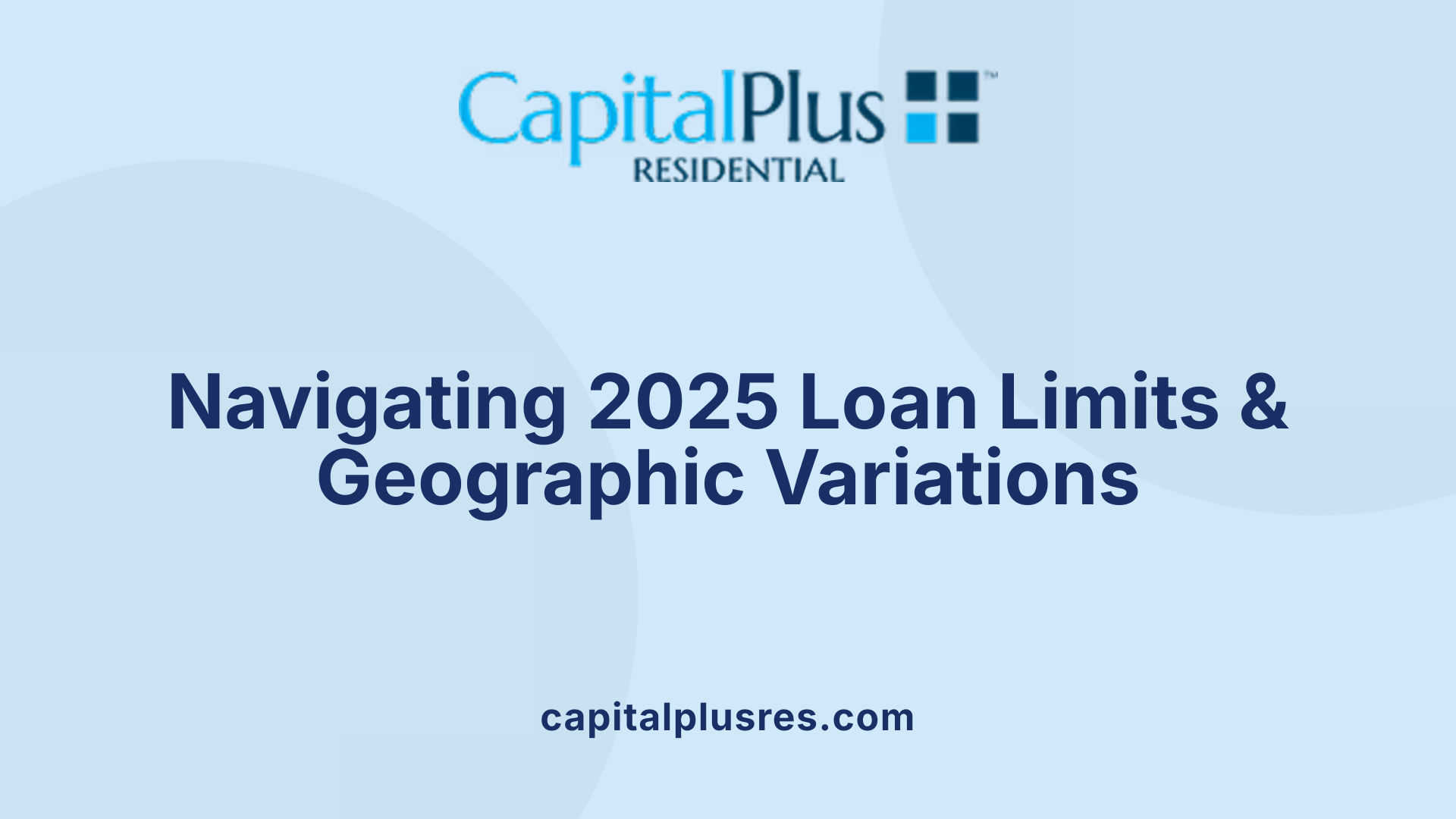
What Are the 2025 Conforming Loan Limits and How Do They Vary?
The Federal Housing Finance Agency (FHFA) sets conforming loan limits annually, establishing the maximum loan size eligible for backing by Fannie Mae and Freddie Mac. For 2025, the conforming loan limit is $806,500 in most areas across the U.S. However, this limit increases in designated high-cost areas, sometimes reaching up to $1,209,750 for single-unit properties. These higher limits accommodate markets where home prices significantly exceed typical values.
Which Areas Are Designated as High-Cost, and How Do They Affect Loan Limits?
High-cost area designations are determined by the FHFA based on local home prices relative to the national baseline. Counties with elevated housing costs receive increased conforming loan limits. This designation is critical because it allows residents to obtain high-balance mortgage loans, which exceed standard limits but remain conforming within these higher ceilings.
How Do High Balance Loan Limits Vary by County?
Loan limits for high balance mortgages differ widely by county under the FHFA guidelines. For instance, some high-cost counties in California such as Alameda, Los Angeles, Napa, Orange, and Santa Clara have 2025 limits reaching around $1,089,300. These elevated limits provide more financing flexibility in expensive real estate markets while still qualifying for Fannie Mae and Freddie Mac programs.
What Loan Amounts Do Jumbo Loans Cover Beyond High Balance Limits?
Jumbo loans come into play when loan amounts exceed these high balance ceilings, such as surpassing the $1.2 million threshold in very high-cost communities. Unlike high-balance loans, jumbo loans are non-conforming, meaning they are not backed by government-sponsored enterprises and carry stricter qualification requirements, including higher credit scores and larger down payments.
Can You Provide Examples of How Loan Limits Apply in California and Other Markets?
In California, while the baseline conforming limit may be $726,200, select counties with expensive housing markets have limits over $1 million — specifically, $1,089,300 for high-balance mortgages. Outside California, high-cost areas also see raised limits but generally not to the same extent. Jumbo loans fill the gap by financing properties that exceed even these higher limits, catering to luxury and high-value homes nationwide.
Understanding Residential Lending Services
Residential lending services evaluate borrowers' financial health and creditworthiness to recommend suitable loan products. They guide applicants through the process of applying, verifying information, and closing, ensuring access to loans like high-balance or jumbo mortgages based on eligibility and local loan limits.
Qualification Requirements and Creditworthiness

Credit Score Requirements for High Balance Loans
High balance loans typically require a minimum credit score of around 620. This threshold reflects their nature as conforming loans backed by Fannie Mae and Freddie Mac, allowing slightly more flexibility for borrowers with moderate credit histories.
Credit Score Requirements for Jumbo Loans
In contrast, jumbo loans demand higher credit scores, usually 700 or above, due to their non-conforming status and increased lender risk. Borrowers with excellent credit ratings find jumbo loans more accessible compared to those with average credit.
Down Payment Differences
Down payment requirements differ significantly between these loan types. High balance loans often accept down payments as low as 3-5%, making them accessible to a wider range of buyers, including first-time purchasers. Jumbo loans generally require much larger down payments, typically 20-25%, reflecting their higher risk profile.
Debt-to-Income Ratios (DTI)
Lenders allow higher DTI ratios for high balance loans, often up to 45-50%, giving borrowers more leeway. Jumbo loans impose stricter DTI limits, frequently capped at 36-43%, aligning with their tighter underwriting standards.
Cash Reserve Needs
Cash reserves for jumbo loans are typically more substantial, often requiring several months’ worth of mortgage payments saved, while high balance loans have more moderate cash reserve requirements, consistent with conforming loan guidelines.
Comparison of Qualifying Criteria
| Loan Type | Min. Credit Score | Down Payment | Max DTI Ratio | Cash Reserves |
|---|---|---|---|---|
| High Balance Loan | ~620 | 3-5% | Up to 50% | Moderate (per conforming) |
| Jumbo Loan | 700+ | 20-25% | 36-43% | Higher (several months) |
Understanding these differences helps borrowers select the mortgage that best aligns with their financial profile and homebuying goals.
Interest Rates and Costs: Assessing Financial Impact
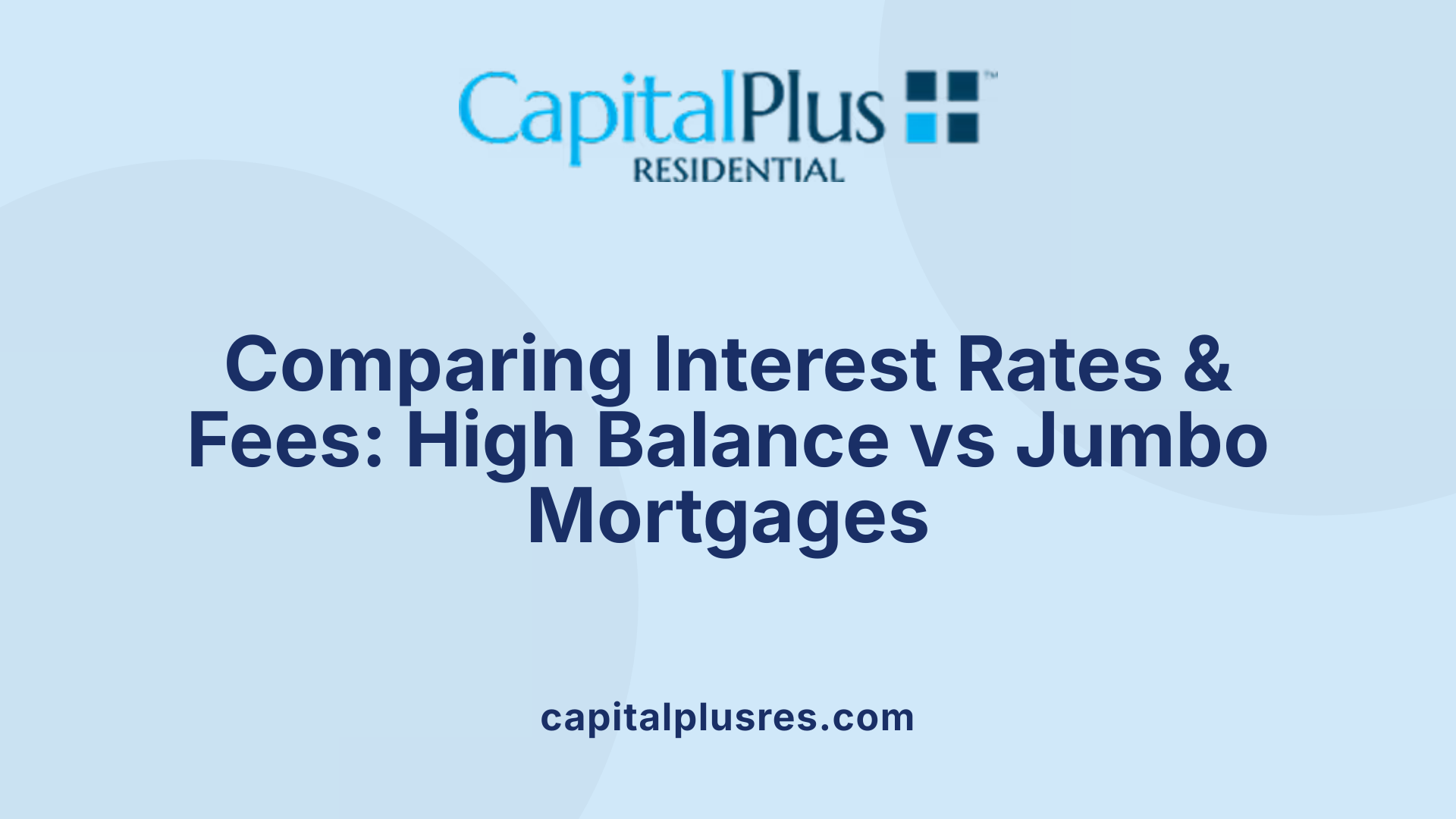
How do interest rates differ between high balance and jumbo loans?
Interest rates on high-balance loans are generally lower than those on jumbo loans. This difference stems from high-balance loans being conforming loans backed by Fannie Mae and Freddie Mac, thus carrying less risk for lenders. Jumbo loans, by contrast, are non-conforming, privately funded loans with higher risk profiles, leading to typically higher interest rates.
What role does government backing play in loan rates?
Government backing significantly affects mortgage costs. High-balance loans benefit from the support of government-sponsored enterprises (GSEs) such as Fannie Mae and Freddie Mac. This backing lowers lender risk and results in more favorable interest rates and qualification terms. Jumbo loans lack this backing, so lenders compensate by charging higher rates and applying stricter qualification criteria.
What are the common down payment requirements?
Down payments vary considerably between the two loan types. High-balance loans often require down payments as low as 3-5%, making them accessible to buyers with moderate savings. Jumbo loans typically demand larger down payments ranging from 20-30%, reflecting the increased loan amount and lender risk.
How do loan fees and documentation compare?
Jumbo loans usually involve higher fees and more extensive documentation than high-balance loans. Jumbo loan applicants must provide multiple years of tax returns, detailed bank statements, and sizable cash reserves. High-balance loans follow Fannie Mae and Freddie Mac guidelines that streamline the documentation process and often result in lower fees.
What refinancing options exist and what costs are associated?
Both loan types offer refinancing options, including cash-out and limited cash-out refinancing. However, refinancing jumbo loans tends to be more expensive due to higher interest rates, stricter credit requirements, and increased paperwork. High-balance loan refinancing is generally more flexible and cost-effective owing to the GSE backing.
Additional considerations
Borrowers should also consider factors such as credit score, debt-to-income ratio, and available cash reserves when choosing between high-balance and jumbo loans. The decision impacts overall mortgage affordability and financial planning.
Related question: What factors should borrowers consider when choosing between a mortgage broker and a direct lender?
Borrowers should evaluate interest rates, fees including closing costs, overall transaction expenses, lender reputation, and customer support quality. Mortgage brokers can shop multiple lenders to find better terms but might add complexity. Direct lenders may offer simpler, more transparent processes, though possibly with less competitive rates.
Strategic Considerations: When to Choose a High Balance Loan
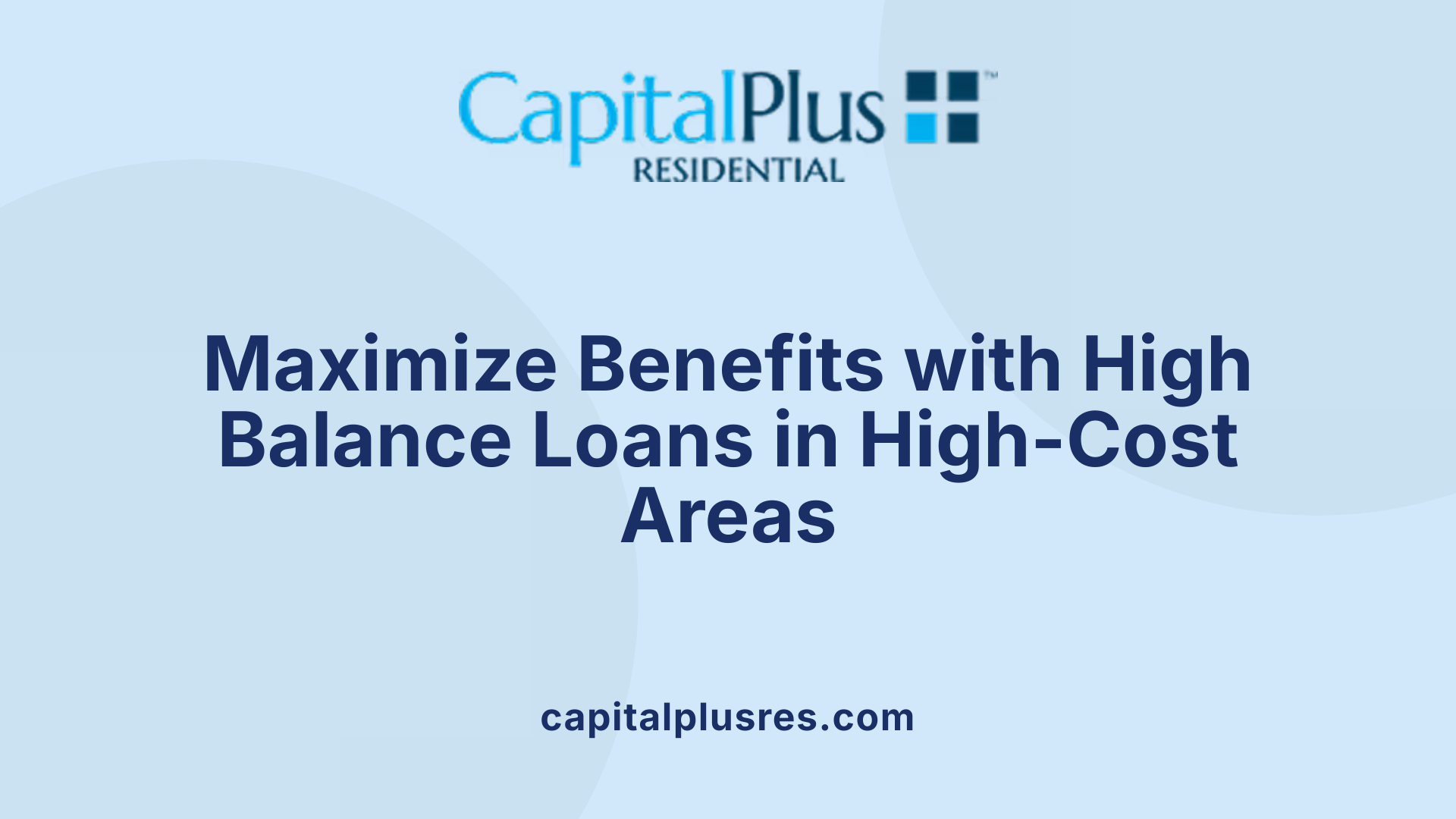
Loan amounts within local conforming limits
High balance loans are designed for properties in high-cost areas where loan amounts exceed the national baseline conforming loan limits but remain within local county limits set by the FHFA. For example, in California’s high-cost counties such as Alameda and Los Angeles, the limit can be as high as $1,089,300. Choosing a high balance loan can make sense if the required loan amount fits between the standard conforming limit (around $806,500) and the high-cost area limit.
Advantages of Fannie Mae and Freddie Mac backing
Because these loans meet Fannie Mae and Freddie Mac’s standards, high balance loans benefit from government-sponsored enterprise backing. This reduces lender risk and often results in lower interest rates compared to jumbo loans. The regulatory support also means high balance loans follow more flexible underwriting guidelines.
Lower qualification hurdles
Applicants typically need a credit score around 620, a down payment as low as 3-5%, and a debt-to-income ratio that can be as high as 45-50%. These more accessible requirements can help borrowers with moderate credit profiles qualify more easily than for jumbo loans, which generally require higher credit standards.
Suitable borrower profiles
High balance loans are suitable for buyers in high-cost counties who need mortgage amounts above national limits but have credit scores below 700. They are a good fit for first-time homebuyers and borrowers with limited cash reserves seeking financing options with manageable qualification criteria.
Situations favoring high balance loans in high-cost counties
When purchasing primary residences in expensive markets where local limits exceed baseline conforming amounts, choosing a high balance mortgage reduces borrowing costs compared to jumbo loans. These loans are also attractive for refinancing existing mortgages within the local conforming range, helping borrowers access better rates and terms.
Mortgage brokerage services can further assist borrowers by connecting them with lenders offering high balance loans, simplifying the application process, and helping secure competitive rates tailored to individual needs.
When Jumbo Loans Are the Right Choice

Loan Amounts Exceeding High Balance Limits
Jumbo loans come into play when property prices surpass the high balance loan limits, typically exceeding $1,089,300 to $1,209,750 in designated high-cost areas. These loans cover amounts beyond what Fannie Mae and Freddie Mac will back, making jumbo loans essential for financing luxury homes and other high-value properties.
Non-Conforming Loan Characteristics
Unlike high-balance loans, jumbo loans are non-conforming, meaning they are not subject to the Federal Housing Finance Agency's conforming loan limits and are not purchased by government-sponsored enterprises. This status results in stricter lending criteria and higher interest rates to mitigate lender risk.
Use Cases Including Luxury Homes and Investment Properties
Jumbo loans are suitable for financing luxury primary residences, second homes, vacation properties, and investment real estate. Their flexibility extends to various loan terms, including fixed-rate and adjustable-rate mortgages. Borrowers can use jumbo loans to secure properties in competitive, high-income markets where conventional or high-balance loans fall short.
Higher Qualification Standards
Qualifying for a jumbo loan typically requires a strong financial profile: credit scores usually above 700, down payments ranging from 20% to 30%, and debt-to-income ratios capped around 36% to 43%. Borrowers must also demonstrate substantial cash reserves and provide more extensive documentation, such as multiple years of tax returns and detailed bank statements.
Flexibility in Loan Terms and Property Types
Jumbo loans offer a wider range of terms and property options than conforming loans, accommodating various borrower needs. They can finance primary residences, secondary homes, vacation houses, and investment properties. This flexibility makes them a practical choice for high-net-worth individuals or anyone purchasing high-cost real estate.
What are the benefits of using a mortgage brokerage service?
Mortgage brokers play a crucial role in navigating the complex jumbo loan process. They evaluate a borrower's financial profile, negotiate favorable loan terms, and manage extensive documentation requirements. With personalized guidance, brokers streamline the loan approval process, helping borrowers access these specialized loans with greater ease and confidence.
Choosing the Right Loan Based on Needs and Profile
Selecting between a high balance loan and a jumbo loan hinges on several factors including loan amount, property location, borrower credit profile, and financial readiness. High balance loans, supported by Fannie Mae and Freddie Mac, offer attractive interest rates, lower down payment requirements, and more flexible qualification standards within high-cost area limits. Jumbo loans, while necessary for larger financing needs beyond these limits, demand stronger credit, higher down payments, and often result in higher costs due to their non-conforming status. Leveraging mortgage brokerage services can provide valuable guidance, access to diverse lenders, and tailored solutions to help borrowers make informed decisions with confidence. Ultimately, understanding the nuances between these loan types empowers buyers to optimize their financing strategy when navigating high-value real estate markets.
References
- High Balance & Jumbo Loans
- Jumbo vs. Conventional Loans
- High-Balance & Jumbo Loans
- What Is a High-Balance Loan?
- Jumbo Mortgage/ High Balance Home Loan California
- Jumbo Versus High-Balance Mortgages in California
- Jumbo Loans for Larger Mortgage Amounts
- Jumbo Vs. Conventional Loans: What's The Difference?
- Pros and Cons of Using Mortgage Brokers: Save Time & ...
Latest Blog


Get Pre-Approved Today
Start your secure online application now so you can get pre-approved for a mortgage (and close on your dream home) quickly within 5 minutes.

